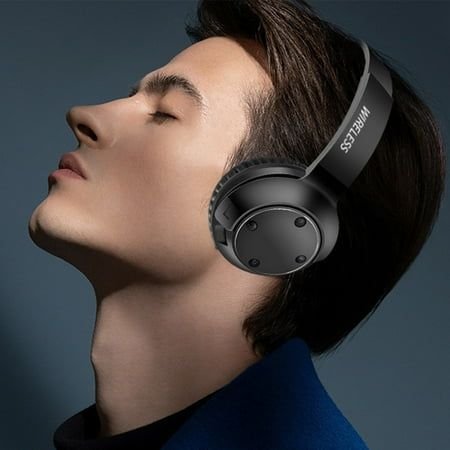The Evolution of Bluetooth Technology: What to Expect with Bluetooth 5.3
Introduction
Bluetooth technology has come a long way since its inception in the late 1990s, evolving to become a staple in wireless communication for a vast array of devices, from smartphones and headphones to smart home gadgets. With the release of Bluetooth 5.3, the latest iteration in the Bluetooth standard, we are poised to see significant improvements and innovations that will enhance connectivity and user experience. This blog will explore the evolution of Bluetooth technology, the key features of Bluetooth 5.3, and what we can expect from this exciting new standard.
Table of Contents
A Brief History of Bluetooth Technology
Bluetooth was initially developed as a short-range wireless communication protocol to eliminate the need for cables between devices. Its first major version, Bluetooth 1.0, launched in 1999, allowing for basic wireless connections. Over the years, Bluetooth has undergone several iterations, with each version introducing enhancements to range, speed, power consumption, and data throughput.

Bluetooth 4.0, released in 2010, introduced the concept of Bluetooth Low Energy (BLE), which significantly reduced power consumption and paved the way for the proliferation of IoT devices. Bluetooth 5.0 further improved upon this by increasing the range up to four times and doubling the data transfer speed. With Bluetooth 5.1 and 5.2, we saw advancements in location services and audio capabilities, respectively.
Now, Bluetooth 5.3 builds on these foundational changes, promising even more sophisticated features and improved performance.
Key Features of Bluetooth 5.3
- Enhanced Audio Quality: One of the most significant updates in Bluetooth 5.3 is the improved audio codec capabilities. With the introduction of features like the Low Complexity Communication Codec (LC3), Bluetooth 5.3 allows for higher-quality audio streaming at lower bit rates. This means users can enjoy better sound quality without draining their devices’ batteries as quickly.
- Isochronous Channel Support: Bluetooth 5.3 introduces isochronous channels, which enable more efficient data streaming for audio applications. This is especially beneficial for devices like true wireless earbuds and hearing aids, where latency and synchronization are crucial. With this feature, users can expect a more seamless audio experience with less lag.
- Power Control Enhancements: Bluetooth 5.3 improves power control mechanisms, allowing devices to dynamically adjust their transmit power based on the connection quality. This feature helps maintain a stable connection while minimizing power consumption, extending the battery life of connected devices.
- Periodic Advertising with Sync Transfer: This feature enhances the way devices can communicate with each other by allowing periodic advertising to be synchronized between devices. It simplifies the process of connecting to nearby devices and helps in scenarios like tracking items or connecting to multiple devices simultaneously.
- Improved Security Features: Bluetooth 5.3 includes enhanced security features to protect against potential threats. The standard offers improved encryption and authentication methods, ensuring a safer connection between devices. This is particularly important as more sensitive data is shared over Bluetooth connections, such as health information or personal communications.
What Does This Mean for Users?

The isochronous channel support could revolutionize the way we use audio devices, especially in crowded environments where maintaining a stable connection is essential. This improvement will also benefit industries that rely on audio transmission, such as live events and broadcasting.
With Bluetooth 5.3, users can expect a more efficient and reliable wireless experience. The advancements in audio quality will particularly appeal to music lovers and gamers who rely on high-fidelity sound. Additionally, the enhanced power control features mean longer battery life for devices, making it easier to enjoy wireless technology without frequent recharging.
Furthermore, the enhanced security measures provide peace of mind for users concerned about privacy and data protection. As Bluetooth technology becomes increasingly integrated into our lives, the need for secure communication cannot be overstated.
The Future of Bluetooth Connectivity
As we look to the future, Bluetooth technology will continue to evolve, adapting to the demands of new applications and use cases. The growing prevalence of smart home devices, wearables, and IoT technology will drive the need for efficient and reliable connectivity solutions.
In the coming years, we can expect to see:
- Increased Adoption of BLE: Bluetooth Low Energy will continue to be the backbone for IoT devices, enabling smart homes and wearable technology to communicate seamlessly while conserving battery life.
- Integration with Other Technologies: We may see Bluetooth increasingly integrated with other technologies, such as Wi-Fi 6 and 5G, to provide even faster and more reliable connections across a broader range of devices. This integration will likely enhance functionalities like smart home automation and augmented reality applications.
- Advanced Location Services: Bluetooth will likely evolve to provide even more precise location services, making it easier for users to track items or navigate spaces using their smartphones or wearables. This could revolutionize industries like retail and logistics, where accurate tracking is critical.
- Greater Focus on Health Monitoring: As health and fitness tracking becomes more mainstream, Bluetooth technology will likely be at the forefront of innovations in medical devices and personal health monitoring. We can expect to see more devices that communicate health data to smartphones, enabling better personal health management.

Conclusion
Bluetooth technology has made remarkable strides since its inception, and with the introduction of Bluetooth 5.3, we are entering a new era of connectivity that promises enhanced audio quality, improved power management, and robust security features. As users, we stand to benefit greatly from these advancements, making our experiences with wireless devices more efficient and enjoyable.
As we move further into 2024 and beyond, the continued evolution of Bluetooth technology will be crucial in shaping the way we connect and interact with the world around us. Whether you’re a casual user or a tech enthusiast, keeping an eye on these developments will help you make informed choices about the devices and technologies you choose to adopt in your daily life.




